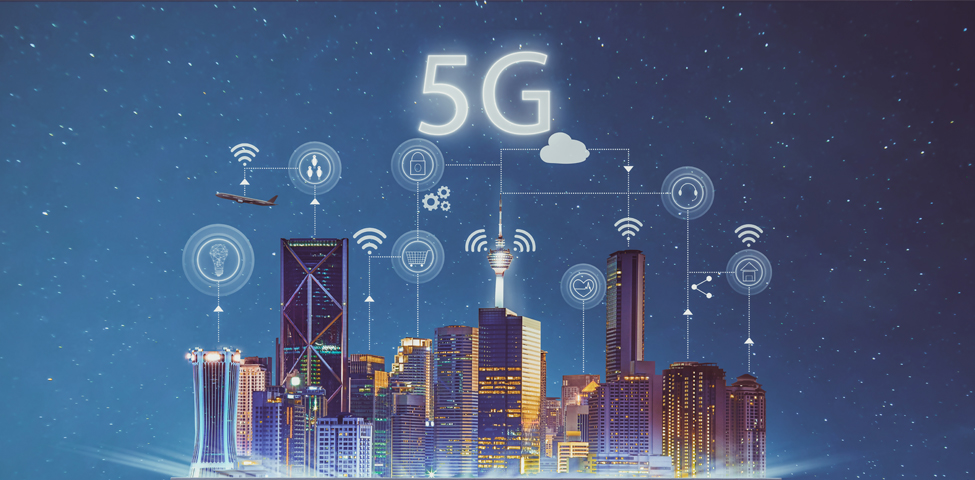
5G, the next generation of cellular technology. The purpose of creating this technology was to bring the landline speeds to mobile devices. It’s all about bandwidth in the end. We’ll get faster upload and download speeds with more bandwidth. 5G home internet increases wireless capacity, more stable mobile connectivity, and lower latency. While the average human reaction time is over 200 milliseconds. However, 5G home internet can send and receive data in less than one millisecond. This means that digital objects will be able to replicate real-time interactions in streaming. Once 5G home internet is in place, many people can access higher speeds for video streaming.
There was a time when such internet speeds were only available to professional broadcasters. However, with the evolution of 5G, plenty of processing power and high-speed connectivity will be available to everyone. There will be no need to invest in costly infrastructure such as satellite trucks. Moreover, content distributors will have many more options for video production.
Consumers will expect access to the latest real-time video technology as 5G connections become more common. Moreover, many organizations are trying to figure out how to offer new experiences to viewers. Higher graphics and visual standards and little to no lag time can make streaming fantastic. As we all know, streaming is likely to be among those expectations.
The quality of a company’s picture and live streaming capabilities will become increasingly crucial as 5G becomes more widely available. As more businesses prepare for 5G to facilitate people with advance technology. The people who are not investing in 5G home internet which is necessity these days. They will be left behind, providing choppy, pixelated images.
The factors that can slow can down streaming
Latency: Latency is affected by a number of factors, including the location of the content that users are trying to access.
Network Congestion: Streaming performance can be harmed by network congestion, which occurs when too much data is sent through the network.
Reduced Latency with 5G home internet
In the world of video delivery, latency is all the rage, which is why many 5G predictions focus on live and interactive streaming capabilities.5G’s home internet promises high-capacity, low-latency connectivity will change the game when it comes to content delivery. This, however, will not happen overnight. New network infrastructure and 5G-enabled end-user devices. As these devices will reap the benefits of 5G home internet technology. Coverage will vary by provider to provider, depending upon the efforts they make. Moreover, we will define the networks by a spectrum of frequency categories. The frequency categories’ are low-band, mid-band, and high-band.
The most important benefit of the new 5G technology, according to popular belief, is faster data speeds. Most people are expecting that with, 5G they will address the pressing issues. To reduce the network latency with 5G home internet. They define end-to-end communication delay as the time between sending a piece of data and receiving the corresponding response.
Low Network Congestion with 5G Home Internet
A strong, shared online network is essential for many businesses. Every day, your company’s network allows you to connect to the internet. So that you can compose emails, participate in video conferences, and perform a variety of other tasks. Congestion can occur when a network is tasked with more data than it can comfortably handle. Increasing the available bandwidth can often alleviate network congestion. When the bandwidth of your network is increased, the network can handle more data. With the increased band, the width you can connect more devices at the same time.
As 5G home internet offers more bandwidth, so users can enjoy smoother streaming than ever before. Users will typically enjoy faster connection speeds and fewer interruptions once you take steps to increase your network’s bandwidth.
Streaming on Mobile Screens with 5G Home Internet
As mobile phones have advanced, so has the content we consume. The time is not too far when the ability of networks to share images or listen to music on our phones was surprising for us. However, now we are using average smartphones for streaming HD videos. We consume entire albums as we get an online experience comparable to a desktop computer. The game has evolved, and with it, a slew of new network standards has emerged. It includes GPRS, 3G, and, most recently, 4G and 4G LTE. Despite rapid technological advancements, we remain at a point where the average mobile network struggles to meet our data needs. Moreover, many people in rural areas still lack reliable 4G or even 3G coverage.
Given these considerations, how far are we from realizing the dream of an always-on connection that provides the kind of speed required for HD – or even 4K – movie streaming. Regardless of location, people will be able to access HD streaming on the mobile screens with 5G home internet.
Netflix on 5G Home Internet
In the coming year, you’ll be able to use the new 5G mobile network in select locations throughout the US. Aside from providing faster Netflix streaming, the network also helps to advance technologies like autonomous driving. The 5G home internet is faster, more reliable, and has a much shorter response time than its 4G predecessor. The possibilities appear to be limitless. The reduced latency and minimal network congestion will play a vital role in fantasizing streaming for you. With the increased bandwidth you can have a smooth 4K or HD video streaming experience on your screens. The increased bandwidth of 5G home internet allows you to send a large amount of data.
With this, you can get better video quality and it makes downloading faster. Multiple applications can now run at the same time thanks to the increased capacity. Air quality and noise pollution, for example, can be measured in real-time, and adjustments made immediately if necessary. 5G field labs are being set up across the country to test the technology. To see that what we can real-world world with the help of this technology. They are also considering video streaming standards to be better and improve virtual-reality-related things.
IPTV on 5G
IPTV is a cutting-edge technology that uses the internet protocol suite instead of cable TV signals to deliver video streaming services. It sends out IP addresses to deliver live TV and on-demand videos. You can watch live streaming on any smart device that is connected to the internet using IPTV. With 5G home internet users can have a better experience of IPTV. Unlike 4G, which uses frequencies between 0.4 and 3.2 GHz, 5G raises the upper end of the spectrum to 300 GHz. As a result, the technology can deliver higher peak data transfer speeds (up to a few gigabits per second), ultra-low latency, and high connection reliability. Aside from high-speed data transfers, 5G home internet allows for the control of drones and machinery.
The wide frequency band allows one to choose the most convenient and appropriate data transmission method for a given situation. Low frequencies are used in long-distance data transfers. Although connection speeds are slow, the signal is not hampered by walls or other obstacles. High radio frequencies are required to transfer large amounts of data quickly. By orders of magnitude, the throughput of such networks exceeds that of 4G. Mobile communications, cloud services, Smart Home technology auto-piloted transportation, and online gaming are just a few applications that use 5G home internet.




